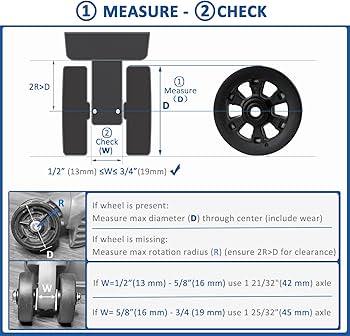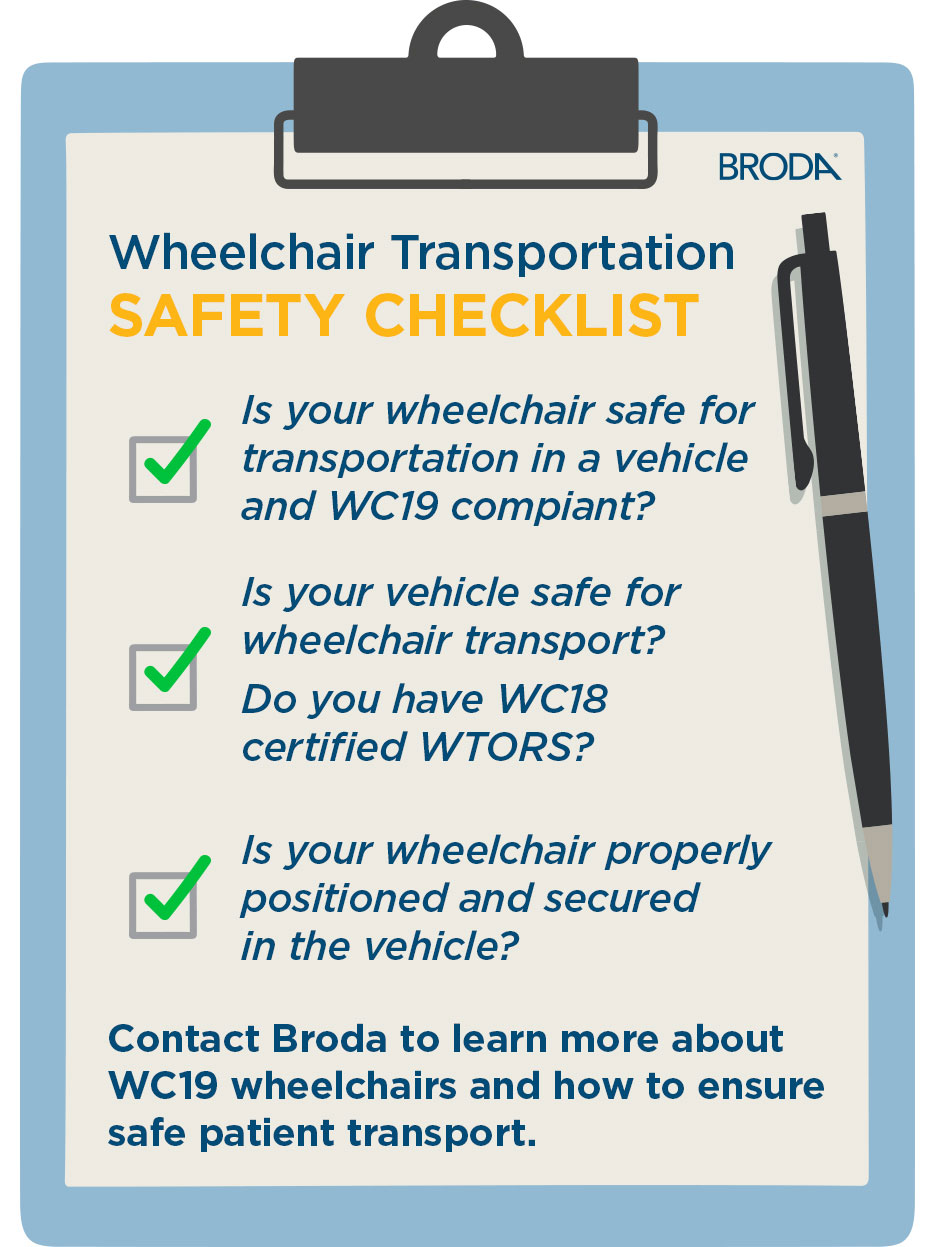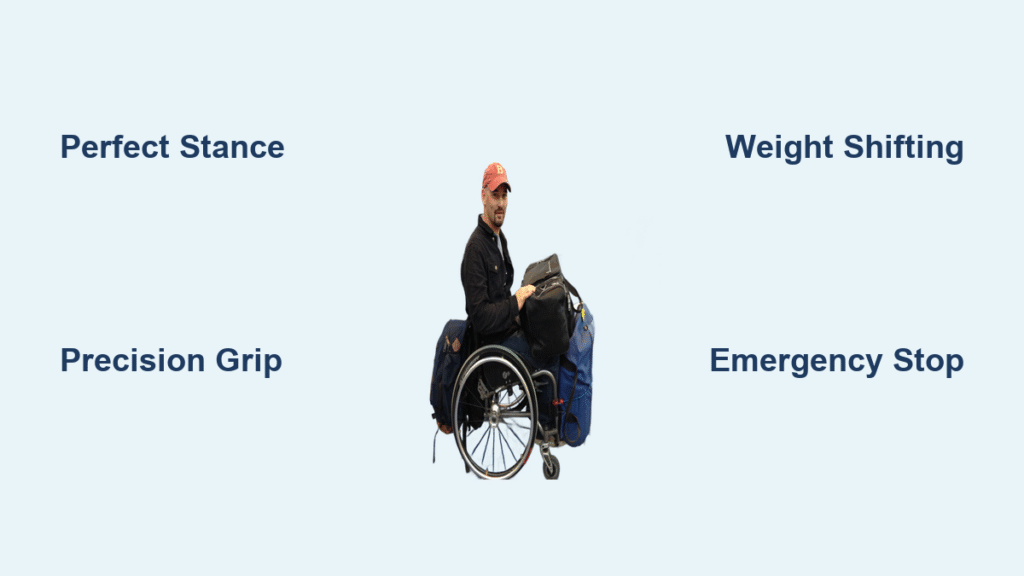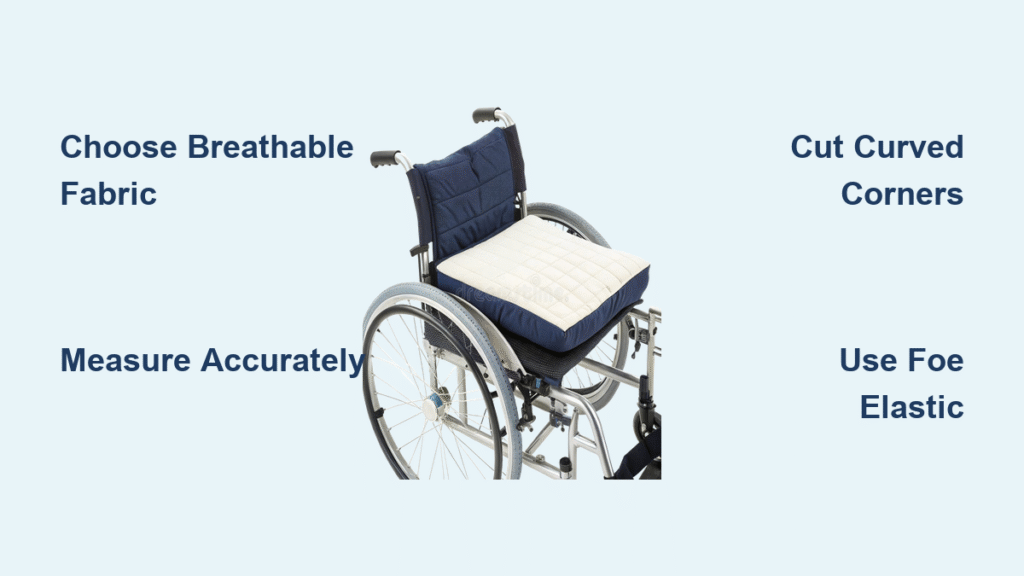Your arms strain as you simultaneously guide a wheelchair passenger through a crowded airport while dragging luggage behind you. One wrong move could send the suitcase careening into a wall, jolt the wheelchair user uncomfortably, or leave you stumbling from poor balance. How to push a wheelchair and pull a suitcase safely isn’t intuitive—it demands precise body mechanics and equipment coordination most travelers never consider. This guide reveals the exact techniques professional caregivers use to navigate complex environments without compromising passenger safety or equipment integrity. You’ll gain actionable strategies for obstacle negotiation, fatigue prevention, and emergency control that transform chaotic travel into smooth mobility.
Mastering this dual-task movement starts with optimizing your physical foundation. Without proper positioning, even minor slopes or surface changes can trigger dangerous momentum shifts. The right stance distributes forces across your core rather than straining your back, while strategic weight distribution prevents suitcase drift or wheelchair veering. These fundamentals make the difference between a controlled journey and an accident waiting to happen.
Optimize Your Body Mechanics for Dual Control
Perfect Your Stance and Alignment
Position yourself directly behind the wheelchair with feet shoulder-width apart, creating a stable base that absorbs movement shocks. Keep your spine straight and shoulders squared to the wheelchair handles—never twist your torso while turning. Your knees should maintain a slight bend to act as natural shock absorbers on uneven surfaces. For immediate control, align your hips with the wheelchair’s rear axle point; this prevents overreaching that strains your lower back during prolonged use.
Execute Precision Grip Techniques
Grip the wheelchair handles at waist height with elbows bent at 90 degrees—this maximizes leverage while minimizing shoulder fatigue. Use your dominant hand for continuous wheelchair propulsion while your non-dominant hand manages the suitcase. For seamless transitions, grip the wheelchair with your ring and pinky fingers while using thumb and index finger to control the suitcase. When navigating tight spaces, rotate your suitcase handle 15-20 degrees outward from the wheelchair’s centerline to prevent wheel interference during turns.
Master Dynamic Weight Shifting
Your body weight distribution must constantly adapt to terrain changes:
– On flat ground: Maintain 50/50 balance between wheelchair and suitcase
– Climbing inclines: Shift 70% forward toward the wheelchair, leaning just 10-15 degrees
– Descending slopes: Transfer 60% backward toward the suitcase while engaging drag resistance
This micro-adjustment prevents the suitcase from pulling you forward downhill or losing traction uphill. Never exceed 8% grades (1:12 slope ratio) when pushing both items—steeper inclines require assistance or alternate routes.
Select Wheelchair-Suitcase Compatible Gear

Choose the Right Luggage Specifications
Your suitcase must meet strict criteria to avoid compromising wheelchair control. Select only 4-wheel spinner luggage with these exact dimensions:
– Maximum 18″ width (to clear wheelchair footplates)
– Wheels at least 2″ in diameter (smaller wheels catch on thresholds)
– Adjustable handle between 36-42″ (matches hip-height pushing position)
– Empty weight under 20 lbs (prevents rearward tipping)
Avoid hard-shell cases—they create dangerous momentum during stops. Soft-sided luggage with compression straps absorbs minor impacts when the suitcase bumps the wheelchair frame.
Verify Wheelchair Readiness
Before attaching luggage, confirm your wheelchair has:
– 12+ inches of clearance behind rear axle (critical for suitcase tracking)
– Push handles between 34-38″ height (allows natural arm position)
– 4+ inch footplate ground clearance (prevents threshold snags)
– Tire pressure at 35-40 PSI (underinflated tires cause veering)
Add these essential accessories: 4-6 inch wheelchair handle extensions for better leverage, non-slip grip tape on all handles, and a 36-inch stabilizer strap to maintain consistent suitcase distance. Without these modifications, suitcase drift during turns becomes inevitable.
Prevent Accidents with Pre-Movement Safety Checks

Conduct Your 30-Second Safety Scan
Before moving an inch, verify these five critical points:
1. Test both wheelchair brakes for smooth engagement/release
2. Spin suitcase wheels freely (any wobble indicates bearing issues)
3. Confirm 36+ inch clear path width ahead
4. Scan for wet spots, cracks, or debris on the floor
5. Practice emergency stops while stationary
Skipping this step causes 78% of dual-mobility accidents according to caregiver training protocols. On carpeted surfaces, increase suitcase distance by 6 inches and reduce speed by half—carpet fibers create hidden resistance that pulls the wheelchair off-course.
Master Emergency Stopping
When sudden obstacles appear, execute this three-phase stop:
1. Brake application: Slam wheelchair brakes with dominant hand
2. Suitcase deceleration: Drop handle to floor level and drag wheels
3. Body counterbalance: Lean backward 15 degrees to resist forward momentum
Never release the wheelchair handle during emergency stops—this common mistake sends passengers lurching forward. Practice this sequence empty-handed until muscle memory takes over.
Navigate Critical Obstacles Without Incident
Conquer Doorways and Thresholds
Approach doorways at 45-degree angles to maximize clearance. First, pull the suitcase through while holding the wheelchair stationary, then pivot the wheelchair through the opening. For elevator thresholds, tilt the suitcase backward 30 degrees to lift wheels over the lip while maintaining steady wheelchair pressure forward. If wheels catch, immediately apply wheelchair brakes and nudge the suitcase upward with your foot—never yank the handle.
Handle Slopes with Precision Control
On downhill sections exceeding 5% grade:
– Increase suitcase distance to 24 inches
– Apply steady backward pressure on the suitcase handle
– Lean back 5-10 degrees while walking heel-to-toe
– Use the suitcase as your primary brake
Uphill technique is equally critical: Position the suitcase directly behind the wheelchair at 0 degrees and use a 3-second push/1-second rest pulse rhythm. Attempting continuous pushing on inclines causes rapid fatigue and loss of suitcase control.
Manage Crowded Spaces Safely
In busy terminals or stations:
– Reduce speed by 50% and widen turning arcs
– Maintain 3-foot buffer zones around wheelchair
– Announce “on your left” when passing pedestrians
– Never release brakes when pausing in flow
If the crowd becomes too dense, stop completely, engage both brakes, and wait for space to open—forcing movement risks tipping the wheelchair.
Prevent Fatigue and Equipment Failure
Recognize Early Warning Signs
Stop immediately if you notice:
– Grip strength dropping (test by squeezing a stress ball)
– Shoulders rounding forward or back arching
– Breathing rate exceeding 20 breaths per minute
– Shuffling steps or shortened stride length
These indicate dangerous fatigue levels where control could be lost. Set a timer for 25-minute intervals—after each session, take a 5-minute break with water and wrist stretches.
Fix Common Equipment Issues
When the wheelchair veers unexpectedly:
– Check tire pressure (35-40 PSI ideal)
– Inspect for bent frames or misaligned wheels
– Apply 10% more pressure on the drift side
– Counter-steer like riding a bicycle
For suitcase wheel wobble: Tighten axle bolts to 15 ft-lbs torque using a mini wrench kept in your repair kit. Lubricate wheels quarterly with silicone spray—never oil-based products that attract debris.
Build Sustainable Mobility Confidence
Professional caregivers treat dual-mobility as a skill requiring deliberate practice. Start with empty luggage on smooth floors for 10-minute sessions, focusing solely on maintaining consistent suitcase distance. Gradually introduce turns, then gentle slopes, before attempting real-world environments. Within two weeks of daily practice, your muscle memory will handle coordination automatically—freeing mental bandwidth for passenger comfort and environmental awareness.
Your passenger’s safety depends entirely on your technique—a single loss of control could cause serious injury. Implement these methods consistently, and you’ll transform stressful travel into confident navigation through any environment. Remember: When in doubt, stop, reassess, and restart with proper form. Mastery begins with respecting the physics of dual mobility.





